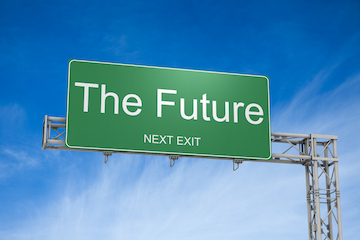The American Wine Industry…What If?
 What if at the end of 2022 it turns out wine sales have dipped below the pre-pandemic 2019 level?
What if at the end of 2022 it turns out wine sales have dipped below the pre-pandemic 2019 level?
What if wealth inequality is unchecked and reaches levels higher than we’ve ever seen?
What if more fires impact American wine-growing regions by the end of 2022 and test our industry’s ability (and the consumers’) to confront smoke taint?
What if the reaction to greater online sales results in fewer wine club memberships?
We are still very much in a state of “what if”. This is not to say we can’t make better predictions today about the future of the wine industry than we could a year ago. We can. But I’m cautioned by what seems to be a giddy sense of confidence concerning the future of wine sales.
Of course, it is great news that the tariffs are gone and the tasting rooms are open. But it’s worth noting that the same headwinds that we acknowledged in 2019 return with the end of tariffs and COVID. Consumers still have the kind of abundant choices that eat into traditional alcohol sales. There remains a “no-low” alcohol trend. The forces of anti-alcohol are with us still and gathering steam. Economic bubbles in some cases have grown fatter and more bloated.
Some suggest the correct model to understand the post-pandemic world is the 1920s; the “Roaring 20’s”. It was a period of great social change. It was a period when “youth culture” changed society. It was a period of some significant economic growth built on low to no taxes, a booming stock market, and new, ingenious technological innovations.
I see no reason to believe the 1920s are a model to look to for what is to come. Today, the world and our economic conditions are more dissimilar to the 1920s than the 1920s were from the 1820s. Most importantly, our economy today is in a remarkable state of flux with interest rates the lowest in history, the nation’s debt near-record high levels, a workforce that faces a coming wave of robotization, and challenges to American economic dominance in the form of China and India are unprecedented.
One thing is clear. The American wine industry is a slave to the state of the economy.
Without having any real answers as to what is coming down the pike, I do know one thing is true. The American wine industry puts itself in the best shape to adapt and change as necessary the more options its players have.
This means the best defense against uncertain times is unshackling the industry from laws and regulations that force wine distribution and sales to move through a narrowly defined pipe. For example, it’s hard to measure the true absurdity (and harm) of a distribution system that does not allow producers to freely sell across state lines to whomever they want. It’s impossible to conduct a true survey of the stupidity of not allowing retailers to ship wine across state lines. And the incoherent economics behind the limits on who may import wine and how it may be brought into this country astound the mind of any thinking person.
What if the American wine industry was unbound from convention, inertia and arcane notions of what’s good for us and allowed to prepare for both good and bad times?

The wine industry is definitly a good time economy Industry. Lets face it much of the US population is not doing well financially, and sitting on its wallet.
Wine continues to be more of a rich persons sport.
Much of the traditional base of wine consumers (Boomers) are dead or cut back on consumption. The Industry has done a terrible job of creating a bigger pie of wine consumers .
Much of the younger population does not want to do what their parents did. Not to say their are not enthusiastic young consumers .
Craft beer , cider ,cocktails, hard seltzers, Ganja and drugs are of more interest .
Wine is intimidating to many of all ages an Somms with attitude do not help.
Frankly a rip off a bong or vaporizer seems more appealing to many of all ages.